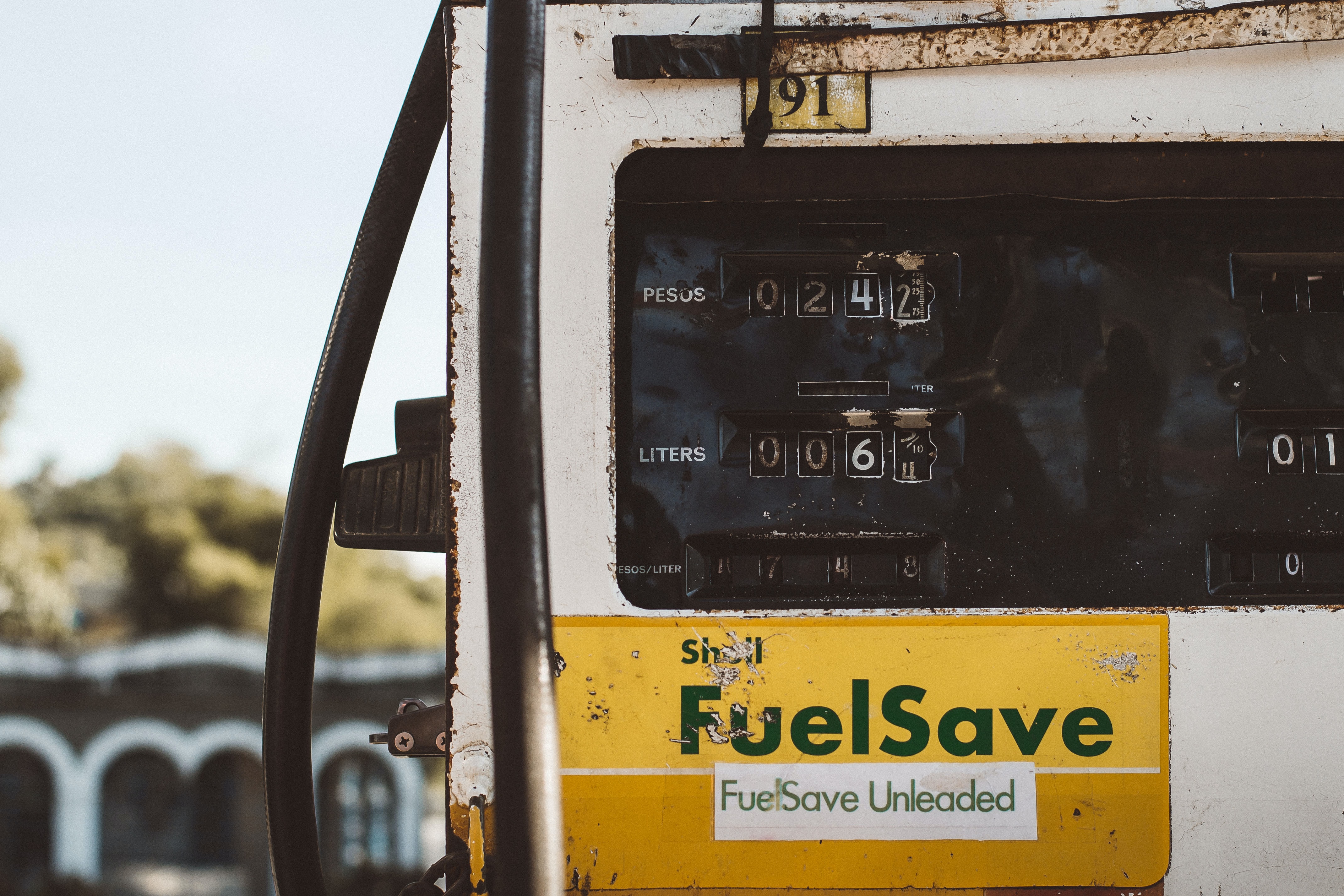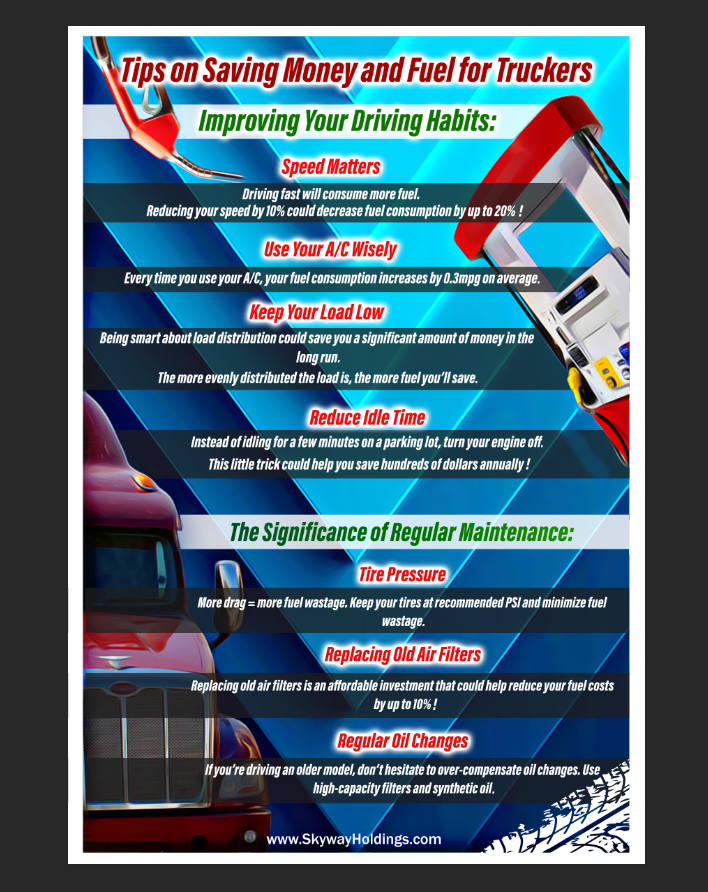
02/15/2021
Tips on Saving Money and Fuel for Truckers
While truck drivers seem to have a relatively straightforward job of hauling loads from point A to point B, there is much more to it than meets the eye. As a professional truck driver, you ought to pay attention to many factors, the most important of them being – efficient fuel consumption.
Knowing how to calculate fuel consumption precisely will not only help you keep your journeys as efficient as possible, it will also allow you to tweak your budget so that you know exactly how much it will cost to get from point A to point B. This way, you don’t have to worry about unpleasant surprises, unforeseen fuel expenses, and other factors that might affect your income.
If you’re just starting your journey in the trucking business, take a moment to check out some of the points we’ve made in this article. They should give you a better idea of how to manage your fuel consumption. Even if you’re an experienced truck driver who’s already familiar with the concept of calculating mpg, it’s still a good idea to glance over our points and perhaps learn something new.
Specific Fuel Consumption Calculations – The Basics
The great thing about these calculations is that you don’t need to have a strong math background in order to do them. In fact, they are pretty simple and easy to comprehend. As long as you know the distance you drove and how many gallons of fuel you had in your tank, getting the mpg value should be reasonably straightforward.
The formula is as follows:
Fc* = Miles Driven / Amount of Fuel Used
While this is an easy-to-follow formula, it’s not always the most precise way to figure out your miles per gallon. There are many factors that affect that number, including the weight of the load you’re hauling, truck specs, and your driving style.
In order to get a better idea of how much fuel you’re burning on each trip, we need to calculate the average gas consumption of your vehicle.
Calculating the Average Fuel Consumption
It’s important to remember that fuel consumption changes based on your driving. If you have to stop at intersections or traffic lights frequently, your truck will use more fuel than it would on an open road. That’s why driving in a city will always push your truck to use more fuel than on a highway.
However, it’s almost impossible to come up with the exact mpg value for long-distance haulers, since you can’t foresee the number of red lights, sudden stops, and other factors that may affect it. Even the most sophisticated mpg calculator can’t account for the scenarios mentioned above.
With that said, there is a relatively easy way of figuring out your average consumption by logging data of multiple tanks in a row across a certain period (for example, a month.)
In simpler words, use our specific fuel consumption formula for every tank/trip for a month (or an arbitrary amount of time). Once you have those values, simply divide them by the number of tanks/trips.
For instance, if you had three trips in a month, and got three values of 20mpg, 22mpg and 25mpg, that would mean your average gas consumption is 22.3mpg (20+22+25/3)
How to Increase Fuel Consumption Efficiency?
Here are a couple of things that should help you improve efficiency and stay on top of your game during the COVID-19 pandemic:

-
Minimize Your Idling Time
Based on some reliable calculations, every hour of idling burns approximately a gallon of fuel. While this doesn’t sound too bad at first glance, keeping your truck idle frequently will quickly add up and significantly impact the overall efficiency.
-
Manage Your Cruise Speed and RPM
It is well known that going faster will burn more fuel. On top of that, managing your cruise RPM makes a huge difference in maintaining reasonable gas consumption efficiency. Finding a sweet spot for RPM isn’t that hard; most trucks tend to perform well and save gas at about 1250 to 1350 RPM. This kind of control and speed management will also help you stay safe on the road!
-
Monitoring Tire Pressure and Air Conditioning
Underinflated tires can be quite detrimental when it comes to fuel economy. In fact, there is a 0.3% fuel mileage reduction for every 1 PSI of pressure drop. Furthermore, every time you use your A/C, your gas consumption increases by 0.3mpg on average. While there certainly are moments when you simply can’t avoid turning on the A/C, you should use every opportunity to just crack the window and minimize the use of A/C.
-
Keeping Your Load Height Low
Load distribution is one of the essential factors for good fuel economy. Even the most fuel-efficient truck will struggle to maintain optimal efficiency if the load is unevenly distributed. The more evenly distributed the load is, the less effort a truck will need to keep moving.
It would help if you also considered investing in aerodynamic add-ons, such as trailer skirts, angled bumpers, and side fairings.
Final Thoughts
Saving fuel isn’t rocket science as long as you know which aspects of your driving habits you ought to optimize, and more importantly – how to come up with a concrete mpg and calculate fuel consumption by using a simple formula.
How did you like our tips? Have we missed something important? Don’t hesitate to let us know! If you’re interested in reading more about driving advice and the latest news in the trucking business, please check out some of our other articles!






